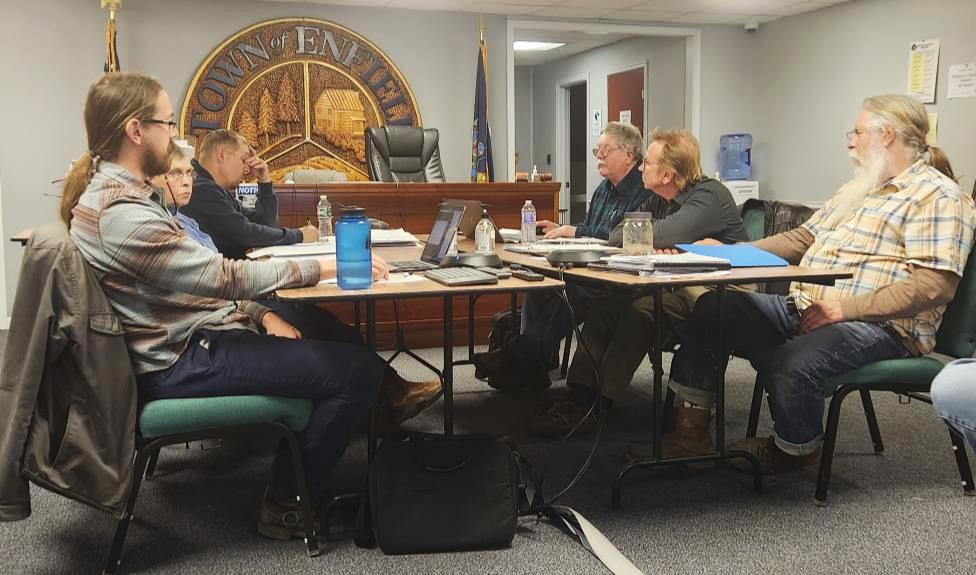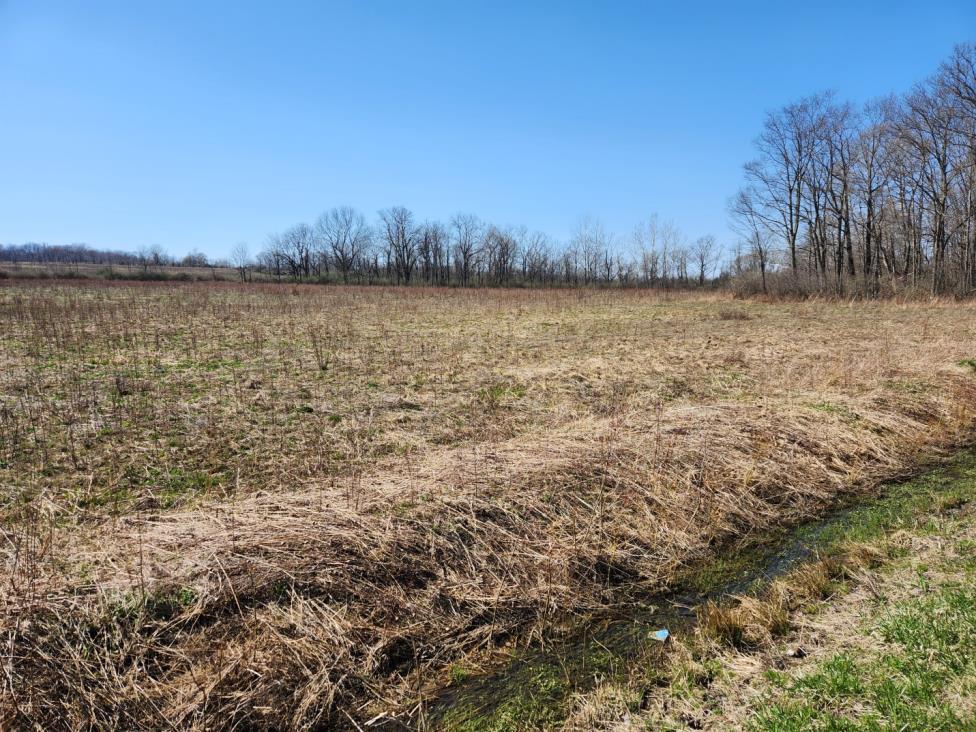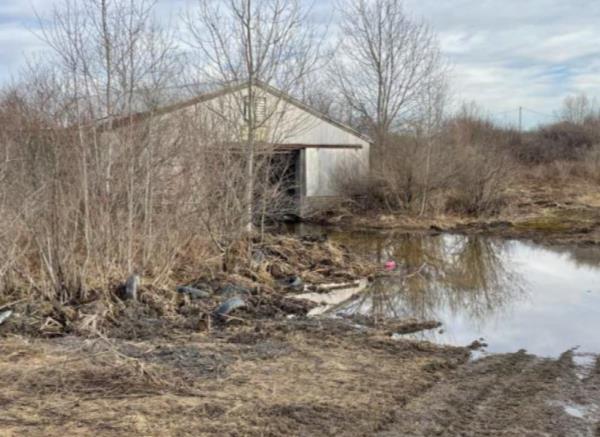Done Deal, Already?
Breezy Meadows Secures Environmental OK
Planners Waive Need for Developer’s Impact Statement

By Robert Lynch, May 3, 2023
It was the heaviest of lifts that the developers of Enfield’s proposed—and controversial—Breezy Meadows housing subdivision had requested. And Wednesday night—perhaps sooner than some had forecast they would—the Town’s Planning Board delivered .
With little questioning from within the Board itself, but following a brief, yet tense, exchange between the Planning Board’s Chair and one Town Councilperson, the Enfield Town Planning Board unanimously made “a negative declaration of environmental significance” regarding the proposed 33-lot Breezy Meadows subdivision, and further specified “that an Environmental Impact Statement is not required.
With this key hurdle for the project surmounted—a decision that avoids owner New York Land & Lakes Development from underwriting a lengthy and more costly environmental study—Planning Board Chair Dan Walker signaled at the meeting’s close that he expects Breezy Meadows’ proposed site plan to come before his Board for its final approval in just a month.
“I’ll prepare a resolution with all the bells and whistles in it,” Walker told the Board, and will then, he said, move it to a vote in June.
“Breezy Meadows,” Land & Lakes’ proposal to subdivide the 337-acre former John William Kenney farm between Podunk and Halseyville Roads into building lots, has faced targeted criticism from its neighbors ever since the Oneonta developer first disclosed its plans in December. As many as a score of residents attended a Planning Board Public Hearing on the proposal in April, speakers’ comments at the time decidedly critical. Fears ranged from the prospective loss of agricultural land; to increased traffic on currently-unpaved Tucker Road; to most particularly, the worried depletion of the well water supply when adding as many as 33 new homes.
“With the density we’re talking with here, we’re not going to stress the water supply,” Walker insisted Wednesday, always erring toward optimism, as he steered his four Planning Board colleagues toward diminishing Breezy Meadows’ water well impact, and also away from any thought that the water issue warranted more study.
Walker’s rationale holds that with the subdivision dividing the former farm into lots averaging ten acres—some larger; some smaller—wells that the new owners will drill would be spaced sufficiently apart so that one neighbor would not deplete the underground water supply for anyone else, whether on the development tract or adjacent to it.
“It sounds like everybody will have a decent water supply for their house,” Planning Board member Mike Carpenter concluded. Though sometimes cautious regarding Breezy Meadow’s impact, Carpenter, like all other voting members, supported Wednesday’s Resolution declaring the project lacking the environmental significance to require an in-depth study.
But momentary tension erupted when Enfield Councilperson Robert Lynch (this writer) interrupted the Planning Board’s perfunctory discussion of Walker’s environmental Resolution. Lynch challenged the Chair and suggested that his own Town Board had been misled when Walker had strongly suggested to the Town Board April 12th that the Planning Board would hold off key votes on Breezy Meadows until June, thereby enabling the Town Board, itself, to weigh in on the project at its May meeting.
Walker Wednesday refuted the allegation, insisting that the Planning Board was not taking final action on the project that night, only making its environmental determination.
Technically, Walker was correct, having told the Town Board April 12th these words: “Right now, I don’t see a final approval coming at the May meeting… because we don’t have all the data in yet.”

But most of that additional data Walker had said he needed concerned water. And it’s the water data that’s proven crucial to determining whether an Environmental Impact Statement will be necessary. One could have drawn the inference that planners would need to delay the environmental vote, too. They did not.
Lynch informed Walker that the Town Board had declined to provide the Planning Board any guidance regarding Breezy Meadows at its April meeting because the Town Board had assumed the decision clock had slowed and that the Town Board could wait a month to offer its input. Walker responded that when it comes to the need for an Environmental Impact Statement, sole authority rests with the Planning Board.
“The Town Board has no role in this,” Walker told Lynch at one point. “We’ve decided no Environmental Impact Statement is required.”
“You’re not instilling positive relations between the Planning Board and the Town Board, or between the Planning Board and the residents of the Town of Enfield,” Lynch rebutted.
“You’re not instilling positive relations” either, Planning Board member Henry Hansteen told Lynch.
At its April Public Hearing, Lynch had urged the Planning Board to demand both an Environmental Impact Statement from Breezy Meadows’ developers, and also that the firm underwrite a hydrological study to professionally assess the development’s well water impact.
Prior to Wednesday’s meeting, Land & Lakes had presented planners a pieced-together “Well Water Study” for the project. Though received by Town officials in an April 24th email, the report was never shared publicly before the Wednesday meeting, (It’s since been posted on the Town’s website.)
Most notably, the study’s key two-page narrative concludes, “New York Land and Lakes Development feels there is more than sufficient water to serve 33 residential lots on this property by individual wells without having any negative effect on neighboring pre-existing wells located outside the subdivision.”
Land & Lakes based its conclusion on a Department of Environmental Conservation website listing of 209 wells in Enfield, the vast majority of which are situated far away from the development site. It also cited the Town’s own water well study, one that surveyed 260 well records, again, town-wide.
Finally, the developer contacted three well-drillers with supposed experience in the area. One driller said that “he doesn’t know of any problems finding water and doesn’t believe there would be a problem….” A second driller likewise said he didn’t know of any problems. The third firm never responded, despite three attempts, the company said.
We’ll rely on “DEC well logs and anecdotal data from local well drillers,” Walker told Planning Board members in answering a particularly nettlesome question on the Breezy Meadows’ Environmental Assessment. The Assessment is a less-exhaustive questionnaire that state regulators require towns to answer about proposed development, even when planners don’t demand a full-blown Impact Statement.
“Just relying on anecdotal well driller data is not the same as a hydrological study,” Lynch responded when he seized the opportunity to comment prior to Wednesday’s vote. (Planning Board meeting procedures don’t allow for public privileges of the floor.)
No other Town Board members attended Wednesday’s Planning Board meeting.
Other neighborhood concerns amply aired at the Breezy Meadows hearing in April received scant discussion by Town planners Wednesday. The project’s impact on Tucker Road never got more than glancing consideration. And while some had argued in April that chopping up an old farm into building lots would eat up valuable cropland, the Board spent little time Wednesday on agricultural impacts, concluding, by inference, that the farm fields weren’t all that valuable anyway. And Land & Lakes, Board members said, could always merge lots and sell them to a farmer, albeit for a price.

Someone asked how the developer would treat the vacant, increasingly overgrown site between the present and when a purchaser buys it.
“If we can get somebody to take it for hay, I’d prefer it to a bush hog,” Alan Lord, the developer’s project manager, told Wednesday’s meeting. Lord also said he plans to bring in larger equipment to grind up the heavy undergrowth surrounding the former Babcock Poultry Farm buildings on the Podunk Road side of the tract.
And then there’s the question regarding chopping of a different sort. It concerns how soon Land & Lakes dividing of the Kenney farm will lead to new homes sprouting up amidst the goldenrods.
“In the 25 years I have worked for New York Land and Lakes Development, I have not seen one of our subdivisions with 100% built out,” the company said in its Well Water Statement, the document sent to the Town by Alan Lord, and thus its implied author. “Using that stat,” he predicted, “in the next 10 years there will be 7 or 8 houses built out of the 33 parcels.” The firm’s go-slow prediction was intended to allay fears that new housing construction will be fast and furious.
“It is likely that a few buyers will buy more than one parcel or will just buy for investment later on,” the report speculated.
Of course, such investment buying is just what some in Enfield most fear. Look at today’s Ithaca. Don’t expect the Breezy Meadows controversy to subside anytime soon, even though the subdivision itself increasingly looks like a done deal.
###

